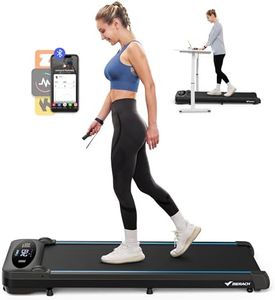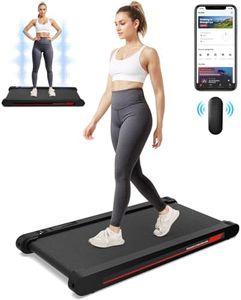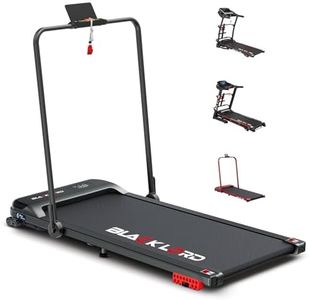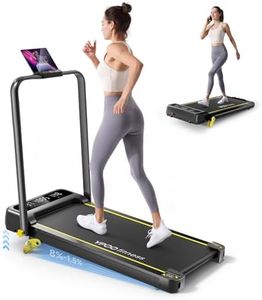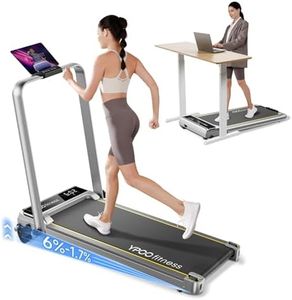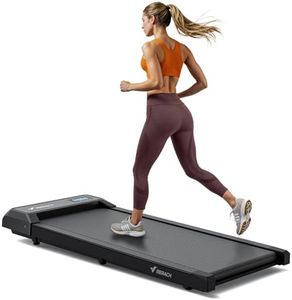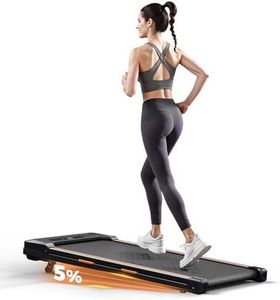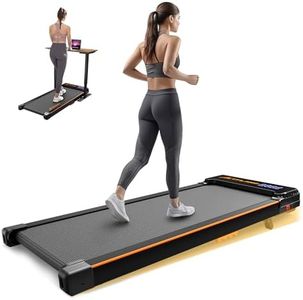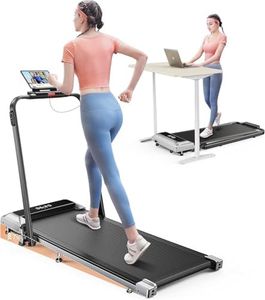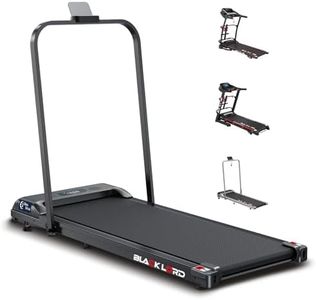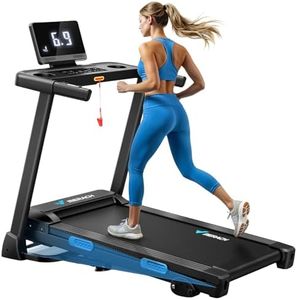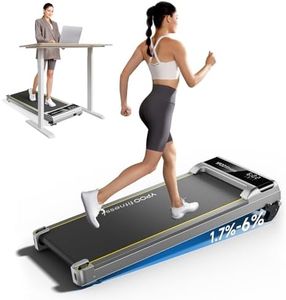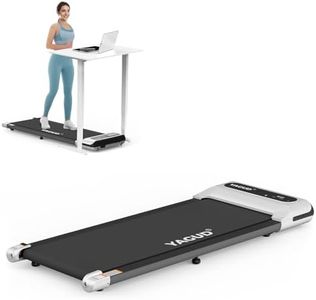We Use CookiesWe use cookies to enhance the security, performance,
functionality and for analytical and promotional activities. By continuing to browse this site you
are agreeing to our privacy policy
10 Best Desk Treadmills
From leading brands and best sellers available on the web.Buying Guide for the Best Desk Treadmills
When shopping for a desk treadmill, you're looking for a device that can help you stay active while you work or perform other tasks at a standing desk. The key is to find a treadmill that is comfortable, quiet, and fits well into your workspace. It's important to think about how you'll use the treadmill: Will you be walking gently during calls, or do you want something for more intense movement? Your available space, how much time you'll spend on it each day, and your desire for extra features will all help you make a smart choice.Speed RangeSpeed range refers to the minimum and maximum speed the treadmill can offer. This is important because it decides whether the treadmill is good for gentle walking, brisk walking, or even light jogging. A lower top speed (around 2-4 mph) is fine if you just want to stroll slowly while working, which is most common. If you want to go faster during breaks or use it for fitness walking, look for higher maximum speeds (up to 6 mph or more). Think about how intensely you want to move and pick a speed range that matches your daily habits.
Motor PowerMotor power tells you how strong the treadmill's engine is, usually measured in horsepower (HP). This matters because a stronger motor generally means smoother and quieter operation, especially for longer sessions. Light-duty treadmills may have motors around 1 HP, suitable for short, gentle walks, while frequent users who spend hours daily should look for higher-powered motors (1.5 HP and above). If you plan to use the treadmill extensively or want it to last longer, a more powerful motor will be more reliable.
Noise LevelNoise level describes how loud the treadmill is in operation. Since you'll likely use it while working, a quieter treadmill is better—it won't disturb your focus or disrupt calls. Some treadmills market themselves as 'ultra-quiet,' but you can get a feel for noise by reading reviews or looking for models with good materials and engineering. If you're in a shared or quiet environment, putting noise level as a top priority is wise.
Platform SizePlatform size (also called deck size or belt size) is the length and width of the walking surface. This matters for comfort and safety; a longer and wider platform allows more natural steps and less worry about stepping off. A short or narrow deck might feel cramped, especially for taller users or those with a longer stride. Choose a platform size that suits your height and walking style—bigger is better for comfort, but be sure it fits your space.
Weight CapacityWeight capacity shows the maximum user weight the treadmill is designed to support. This is important for safety and longevity, as using a treadmill above its weight limit can cause damage or risk injury. Always pick a treadmill that can support at least a little more than your body weight, as this helps ensure durability and performance over time.
PortabilityPortability refers to how easy it is to move or store the treadmill when not in use. Some desk treadmills are lightweight with wheels and are designed to slide under a desk or into a closet, while others are heavier and meant to stay in one place. If you'll need to store it away daily or want to use it in different locations, look for a portable or foldable treadmill.
Control and Display OptionsThe control and display panel lets you set the speed, track your steps, distance, and other stats. Simpler treadmills may have just a few buttons and a basic screen, while others offer remote controls, Bluetooth connections, or larger displays. Consider how much information you want and how easily you’d like to adjust settings as you work.
